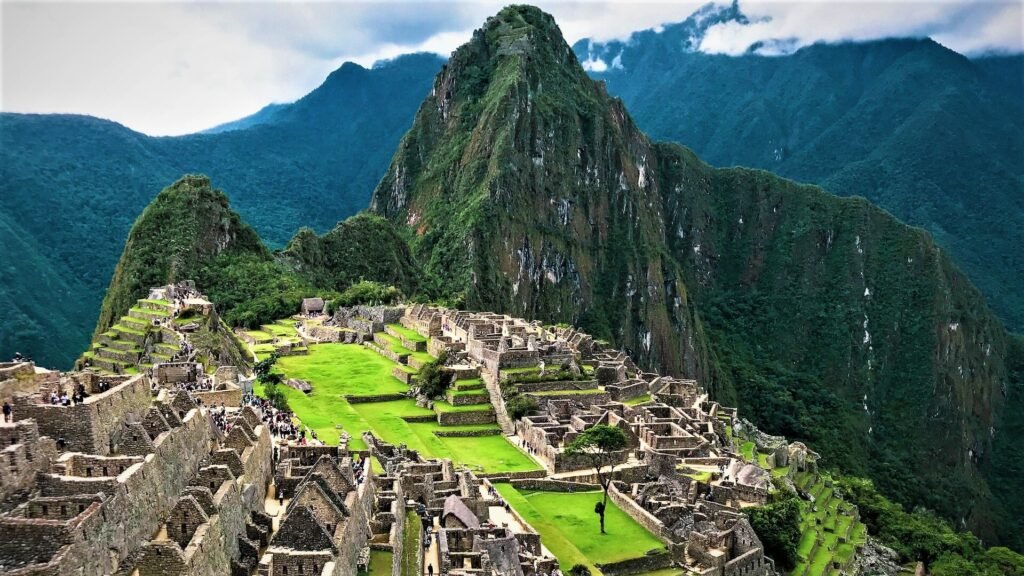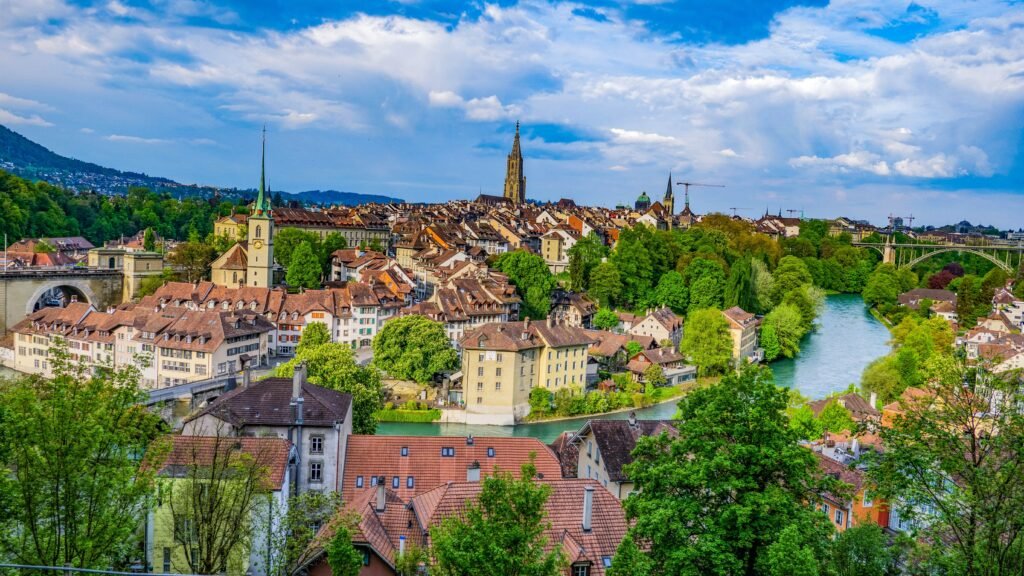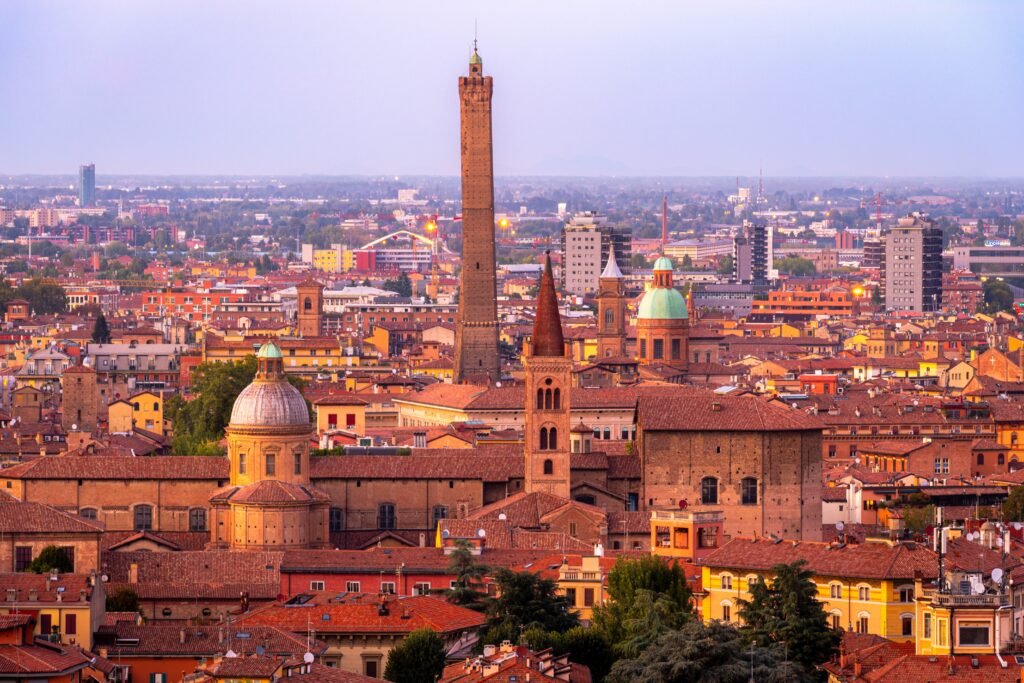Welcome to a breathtaking adventure through the ancient ruins of Machu Picchu, a UNESCO World Heritage Site nestled in the heart of the Peruvian Andes. This awe-inspiring destination boasts not only its enigmatic history but also its breathtaking panoramic views. In this travel blog, we will delve into the best time to visit Machu Picchu, how to get there, intriguing facts about the site, the majestic Machu Picchu Mountain, the journey from Lima to Machu Picchu, and other captivating topics that make this destination truly unique.
Table of Contents
Best Time to Visit Machu Picchu ?
Machu Picchu’s weather and overall experience can vary significantly depending on the time of year you choose to visit. Let’s dive deeper into the different seasons and what each has to offer:
Dry Season (May to September):
May: The beginning of the dry season is a wonderful time to visit as the crowds are still relatively low, and the landscapes are lush from the rainy season. It’s an excellent opportunity to witness the transition from rainy to dry.
June to August: These months mark the peak tourist season due to summer holidays in the Northern Hemisphere. The weather is at its best, with clear skies, warm days, and cool nights. However, popular sites might be crowded, so booking accommodations and entry tickets in advance is recommended.
September: As the dry season comes to a close, September offers a pleasant transition to the shoulder season. The crowds start to thin out, and the landscapes are still green from the rainy months.
Shoulder Season (October and November):
October: This is an underrated time to visit. The weather is generally good, and the crowds have significantly reduced compared to the peak season. The landscapes remain vibrant, and you might even catch some wildflowers in bloom.

November: As the rainy season approaches, November can be a bit unpredictable in terms of weather, but it’s still a decent time to visit. The decreased crowds allow for a more intimate experience with the ruins.
Rainy Season (December to April):
December to February: These months are part of the rainy season. While the number of tourists is lower, heavy rainfall can make trekking and exploring the ruins more challenging. However, this season has its charm, as the landscapes are lush and the site takes on a different kind of beauty.
March to April: The end of the rainy season is a time of renewal as the vegetation is lush, and the waterfalls are at their fullest. Visiting toward the end of April can offer more favorable weather conditions compared to earlier in the year.
Tips for Visiting During Different Seasons:
- Peak Season (June to August): If you plan to visit during these months, consider booking accommodations, train tickets, and entry tickets well in advance to secure your preferred options.
- Shoulder and Rainy Seasons: These periods offer fewer crowds and unique experiences. Be prepared for variable weather during the rainy season and pack appropriate rain gear and layers.
- Altitude Considerations: Machu Picchu is situated at a high altitude, so regardless of the season, it’s important to acclimatize properly in Cusco or Aguas Calientes before heading to the site.
The best time to visit Machu Picchu depends on your preferences and priorities. Whether you’re seeking ideal weather, fewer crowds, or a unique perspective on the site’s beauty, Machu Picchu has something to offer in every season. Research and plan according to your interests to make the most of your journey to this ancient wonder.
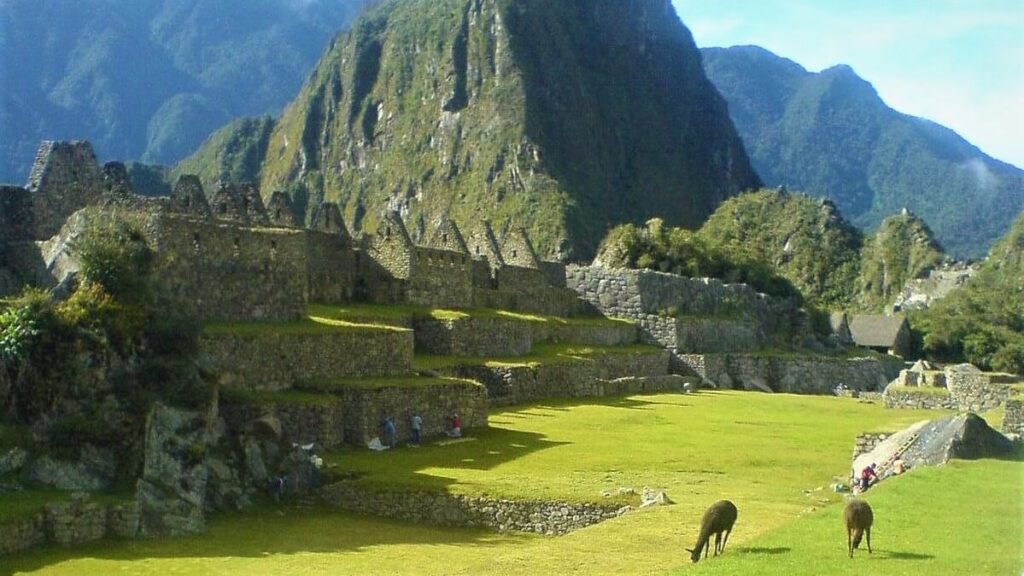
How to Get to Machu Picchu ?
Getting to Machu Picchu is a captivating journey that combines various modes of transportation, each offering a unique perspective on the diverse landscapes of Peru. Here’s a comprehensive guide on how to reach this ancient wonder:
Lima to Cusco:
By Air: Most travelers begin their journey by flying into Lima, Peru’s capital city. Jorge Chávez International Airport in Lima serves as a major international gateway. From Lima, you’ll need to take a domestic flight to Alejandro Velasco Astete International Airport in Cusco, the city nearest to Machu Picchu. The flight takes about 1.5 hours and offers stunning views of the Andes during the descent into Cusco.
Cusco to Aguas Calientes:
Once you’ve arrived in Cusco, you have a few options to continue your journey to Machu Picchu:
By Train: The train journey from Cusco to Aguas Calientes, the town at the base of Machu Picchu, is an experience in itself. The train routes are operated by PeruRail and Inca Rail, offering different classes and services. The ride takes you through breathtaking landscapes, river valleys, and Andean villages. You can choose between different departure points, such as Cusco or Ollantaytambo, each offering a unique perspective on the journey.
By Trekking:
- Inca Trail: This iconic trek takes about 4 days to complete and offers an immersive experience through diverse ecosystems, ancient ruins, and stunning vistas. Permits for the Inca Trail are limited, so booking well in advance is essential.
- Alternative Treks: If the Inca Trail permits are sold out or you’re looking for a different experience, consider the Salkantay Trek, Lares Trek, or other lesser-known routes. These treks provide a chance to interact with local communities and witness different facets of the Andean landscapes.
Aguas Calientes to Machu Picchu:
From Aguas Calientes, you have the final stretch of the journey to Machu Picchu itself:
By Bus: The most common way to reach the entrance of Machu Picchu from Aguas Calientes is by taking a shuttle bus. The journey takes about 30 minutes and offers sweeping views as you ascend the winding road to the entrance gate.
On Foot: For the adventurous, you can hike from Aguas Calientes to Machu Picchu. The uphill hike takes around 1.5 to 2 hours and follows a series of switchbacks. The reward is a sense of accomplishment and the chance to experience the site on foot.
Practical Tips:
- Tickets and Permits: Secure your entry tickets to Machu Picchu and any necessary permits (such as Inca Trail permits) well in advance, especially during peak season.
- Altitude Acclimatization: Cusco and Machu Picchu are at high altitudes, so give yourself time to acclimatize to prevent altitude sickness. Spend a couple of days in Cusco before heading to Machu Picchu.
- Guided Tours: Consider joining a guided tour, whether for the Inca Trail or for a guided tour of Machu Picchu. Local guides provide historical insights and enhance your overall experience.
In essence, the journey to Machu Picchu is not just about reaching the destination but also about embracing the diverse landscapes, rich history, and sense of adventure that comes with each mode of transportation. Whether you’re taking a train, hiking a trail, or a combination of both, your journey to Machu Picchu will be filled with awe and anticipation.
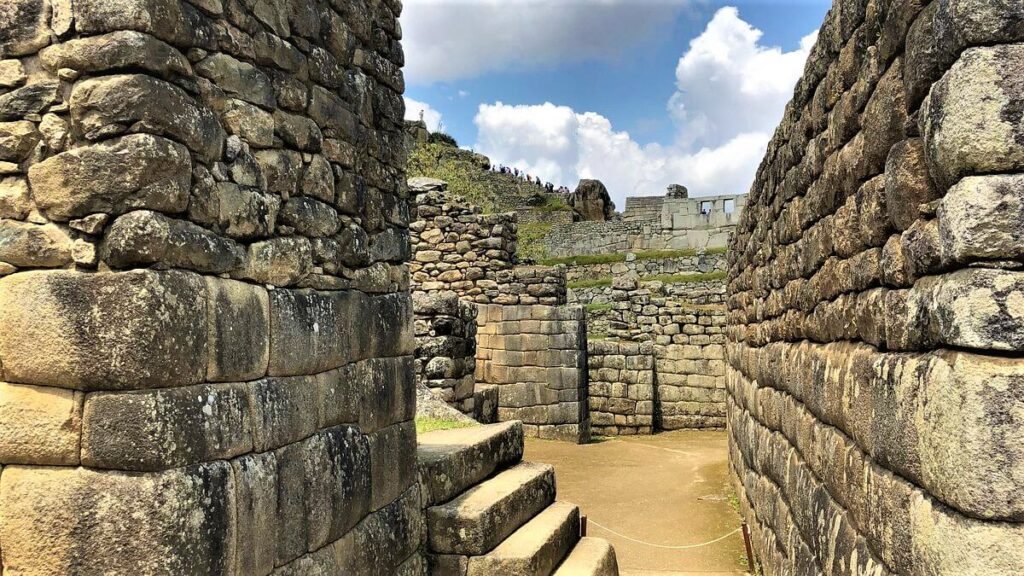
Facts About Machu Picchu
Machu Picchu, the “Lost City of the Incas,” is a mesmerizing archaeological wonder that continues to captivate the hearts and minds of travelers from around the world. Beyond its stunning beauty, this ancient citadel holds a wealth of intriguing facts that shed light on its history, architecture, and cultural significance. Let’s delve into the depths of Machu Picchu’s secrets:
The Purpose of Machu Picchu:
While the exact purpose of Machu Picchu remains a subject of debate among historians, it is generally believed to have served as a royal estate for the Inca emperor Pachacuti. Its strategic location, intricate architecture, and sacred sites suggest that it had religious, administrative, and astronomical functions as well.
Architectural Precision:
Machu Picchu’s architecture is a marvel of engineering and stonecraft. The precision of the stone-cutting techniques used by the Incas is astounding, with stones perfectly carved to fit together without the use of mortar. The craftsmanship and attention to detail in the construction of walls, terraces, and structures showcase the advanced engineering knowledge of the Inca civilization.
Strategic Location:
Machu Picchu is nestled atop a ridge between two mountain peaks, offering natural defenses and stunning panoramic views of the surrounding landscapes. The site’s strategic location allowed it to control access to the Sacred Valley and maintain communication between different regions of the Inca Empire.

Preservation through Isolation:
One of the factors that contributed to the exceptional preservation of Machu Picchu is its isolation. When the Spanish conquistadors arrived in the 16th century, the site was abandoned, and its remote location helped shield it from their notice. As a result, the city remained largely intact, providing modern archaeologists with invaluable insights into Inca culture and architecture.
Rediscovery by Hiram Bingham:
In 1911, American historian and explorer Hiram Bingham “rediscovered” Machu Picchu. While local residents were aware of the site’s existence, Bingham’s expedition brought global attention to the stunning ruins. His work shed light on the significance of the Inca civilization and sparked interest in the study of Andean archaeology.
UNESCO World Heritage Site:
Machu Picchu was designated a UNESCO World Heritage Site in 1983. Its cultural and historical importance, as well as its exceptional preservation, led to its recognition as a site of global significance. The designation has helped ensure its protection and conservation for future generations.
Divisions of the Citadel:
Machu Picchu is divided into two main areas: the agricultural sector and the urban sector. The agricultural sector consists of terraced fields that were used for cultivating crops, while the urban sector includes plazas, temples, residential buildings, and ceremonial sites.
Solar and Astronomical Significance:
Several structures within Machu Picchu align with astronomical events. For instance, the Intihuatana stone, also known as the “Hitching Post of the Sun,” is believed to have been used for astronomical and ritualistic purposes. It was likely used to mark the solstices and equinoxes.
Llama Symbolism:
Llamas were revered animals in Inca culture and were often depicted in various forms of art. At Machu Picchu, llamas are often depicted in stone carvings and artwork, symbolizing their significance in daily life and spiritual beliefs.
Ongoing Research:
Despite decades of research, there are still mysteries surrounding Machu Picchu. Ongoing studies continue to unveil new insights into its construction, purpose, and the lives of the people who inhabited it.
Machu Picchu’s allure goes beyond its stunning vistas. It’s a testament to human ingenuity, culture, and history. As you wander through its ancient pathways, remember that each stone holds a story waiting to be discovered, offering a glimpse into the rich tapestry of the Inca civilization that once thrived in the heart of the Andes.
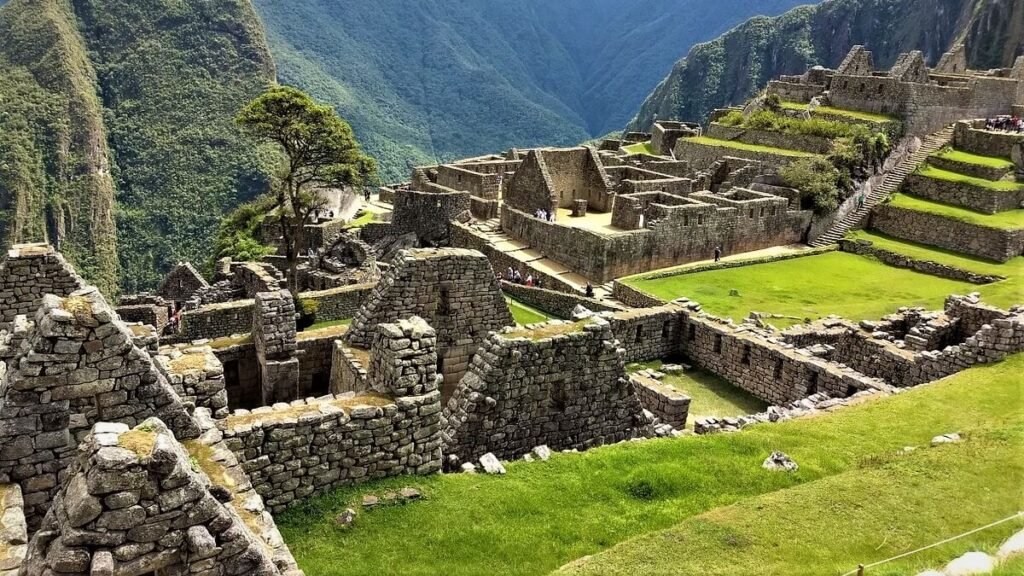
Machu Picchu Mountain
Machu Picchu Mountain is not just a backdrop to the iconic Machu Picchu ruins; it’s a distinct adventure that offers a different perspective of this awe-inspiring UNESCO World Heritage Site. Rising above the ancient citadel, Machu Picchu Mountain presents intrepid travelers with a challenging but immensely rewarding hike that culminates in panoramic vistas and a profound sense of accomplishment. Let’s dive into the details of this remarkable ascent:
Magnificent Views:
Machu Picchu Mountain, known as “Montaña Machu Picchu” in Spanish, rises to an elevation of 3,061 meters (10,043 feet) above sea level. The highlight of this ascent is the breathtaking panoramic view it offers of the entire Machu Picchu complex, the surrounding mountains, and the meandering Urubamba River below. Watching the sunrise or sunset from this vantage point is a truly unforgettable experience.
Hiking Experience:
The hike up Machu Picchu Mountain is not for the faint of heart, but it’s worth every step for those seeking a more adventurous perspective of the site. The trail is well-maintained but challenging, with steep inclines, stone steps, and occasional narrow pathways. The hike generally takes about 1.5 to 2 hours to reach the summit, depending on your pace and fitness level.
Limited Daily Entries:
Access to Machu Picchu Mountain is limited to a specific number of visitors each day in order to preserve the environment and provide a better experience for hikers. It’s essential to secure your entry ticket in advance to guarantee your spot.

Machu Picchu Mountain vs. Huayna Picchu:
Machu Picchu Mountain and Huayna Picchu are two separate mountains that visitors can hike for different perspectives. While both offer stunning views, there are some differences:
- Machu Picchu Mountain: This hike is generally considered less steep and strenuous compared to Huayna Picchu. It provides a broader view of Machu Picchu and the surrounding landscapes.
- Huayna Picchu: Known for its dramatic views and the iconic viewpoint seen in many photographs, Huayna Picchu is a steeper and more challenging hike. It’s a shorter hike but involves narrow pathways and steep drop-offs.
Sunrise and Sunset:
Watching the sunrise or sunset from the summit of Machu Picchu Mountain is a highlight of the experience. As the sun’s rays gradually illuminate the ancient ruins and the Andean landscapes, you’ll feel a deep connection to the natural world and the history that surrounds you.
Preparation and Tips:
- Physical Fitness: While the hike is achievable for most people, it’s important to be reasonably fit and acclimatized to the altitude. Take your time and rest as needed.
- Hydration and Snacks: Carry enough water and energy-boosting snacks for the hike. The elevation can dehydrate you faster than you might expect.
- Appropriate Clothing: Wear comfortable, moisture-wicking clothing and sturdy hiking shoes. Be prepared for changing weather conditions.
- Entry Time: Plan your entry time well to ensure you have ample time to hike up and down before the site closes.
Hiking Machu Picchu Mountain adds an extra layer of adventure to your visit, offering you a unique view that few have the opportunity to witness. It’s a journey that not only takes you to new heights but also deepens your appreciation for the beauty and historical significance of Machu Picchu. As you conquer the challenging ascent and stand atop this majestic mountain, the world below seems to stretch out in all its glory, reminding you of the incredible achievements of the Inca civilization and the enduring power of human curiosity and exploration.
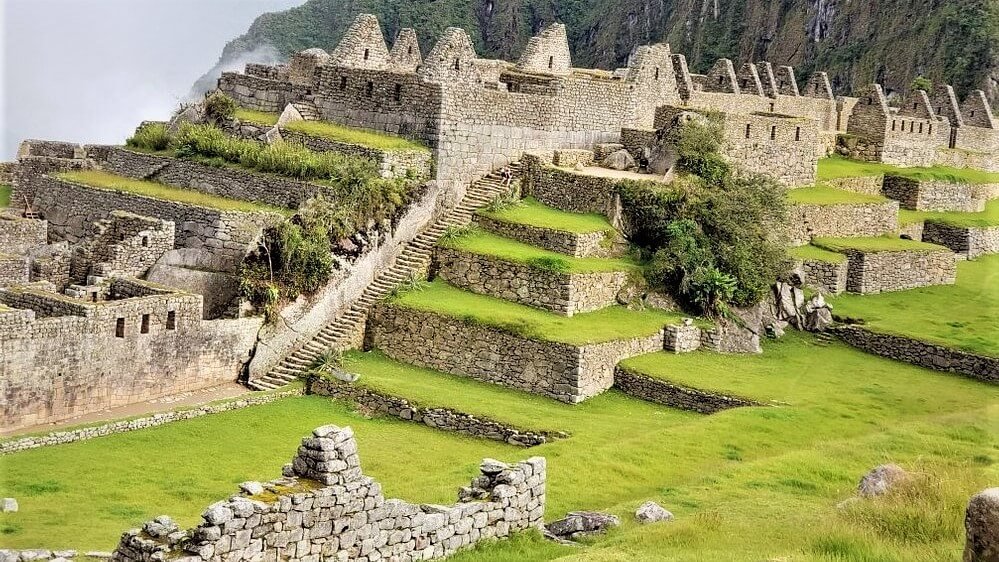
Lima to Machu Picchu
The journey from Lima to Machu Picchu is a captivating odyssey that traverses diverse landscapes, cultures, and histories. Starting from the bustling coastal capital of Peru and culminating in the awe-inspiring heights of the Andes Mountains, this expedition promises to be an experience of a lifetime. Let’s delve into the details of this transformative journey:
Lima: Gateway to Peru’s Rich Culture:
Your adventure begins in Lima, Peru’s vibrant capital situated on the Pacific coast. Lima is a captivating blend of ancient history and modern urban life. Explore the historic district of Miraflores, indulge in the world-renowned Peruvian cuisine, and immerse yourself in the city’s cultural heritage.
Flight to Cusco: The Imperial City:
From Lima, take a domestic flight to Cusco, the gateway city to Machu Picchu. Cusco, often referred to as the “Historical Capital of Peru,” is a city steeped in Inca and colonial history. Spend a couple of days here to acclimate to the high altitude and explore the city’s cobblestone streets, ancient ruins, and vibrant markets.
The Sacred Valley: En Route to Machu Picchu:
As you journey from Cusco to Machu Picchu, you’ll pass through the Sacred Valley of the Incas. This fertile valley is dotted with traditional Andean villages, ancient terraces, and archaeological sites. Explore towns like Pisac and Ollantaytambo, where you can witness the ingenuity of Inca architecture and the daily lives of locals.
Train Ride to Aguas Calientes:
From Ollantaytambo, you’ll embark on a scenic train ride to Aguas Calientes, the town located at the base of Machu Picchu. The train journey is an experience in itself, offering panoramic views of the Andean landscapes, lush valleys, and towering peaks. Relax and soak in the scenery as you approach your ultimate destination.
Arrival in Aguas Calientes: The Gateway to Machu Picchu:
Aguas Calientes is a charming town nestled in the cloud forest, surrounded by greenery and mist. This is where you’ll spend the night before your early morning ascent to Machu Picchu. Enjoy the quaint atmosphere, indulge in local cuisine, and rest up for the adventure ahead.
Machu Picchu: A Dream Realized:
The culmination of your journey is the awe-inspiring Machu Picchu itself. Whether you choose to hike the Inca Trail, take the train, or a combination of both, the moment you set foot in this ancient citadel is nothing short of magical. Watch the sunrise cast its golden glow upon the ruins, revealing the intricate stonework and sacred sites that have captured the world’s imagination for centuries.
Lima to Machu Picchu: A Transformation:
The journey from Lima to Machu Picchu is not just a physical expedition; it’s a transformational experience. It’s a journey that takes you from the bustling cityscape of Lima to the tranquil heights of the Andes, from the modern world to the ancient past. Along the way, you’ll encounter the warmth of Peruvian culture, the resilience of history, and the breathtaking beauty of nature. The contrasts and connections you’ll discover will stay with you long after you return home, reminding you of the incredible diversity and wonder that our world holds.
The journey from Lima to Machu Picchu is not just about reaching a destination; it’s about embracing the entire experience—the people, the landscapes, the history, and the sense of wonder that accompanies every step of the way. It’s a journey that transcends time and space, allowing you to connect with the essence of Peru and uncover the mysteries of a civilization that left its mark on the world through the majestic ruins of Machu Picchu.

In the grand tapestry of human history, Machu Picchu stands as a beacon of wonder and mystery, inviting travelers to embark on an extraordinary journey. As we conclude this exploration, we find that Machu Picchu is a symphony of experiences, harmonizing the best time to visit with the enchanting allure of its architecture, nature, and heritage.
Navigating through this enchanting landscape involves uncovering the hidden treasures of facts about Machu Picchu, where precision engineering and spiritual significance meld. Its very existence defies time, as does the majestic Machu Picchu Mountain, a testament to human endeavor that rewards hikers with panoramic vistas that echo through the ages.
From the modern bustle of Lima to the tranquil awe of the mountaintop citadel, the passage from Lima to Machu Picchu is a journey of contrasts, cultures, and connections. It reveals the heart of Peru, from the lively coastal capital to the sacred heights of the Andes, where ancient and modern intertwine seamlessly.
So, when pondering the best time to visit Machu Picchu, remember that every moment holds a story waiting to be lived. Whether guided by the celestial dance of stars atop Machu Picchu Mountain, exploring the rich tapestry of history within its stone walls, or embarking on the transformative route from Lima to Machu Picchu, this remarkable destination transcends time, welcoming all who seek its unparalleled magic. Travel safely with the best travel insurance. Check here for the best flights.

Check out the other blogs.
